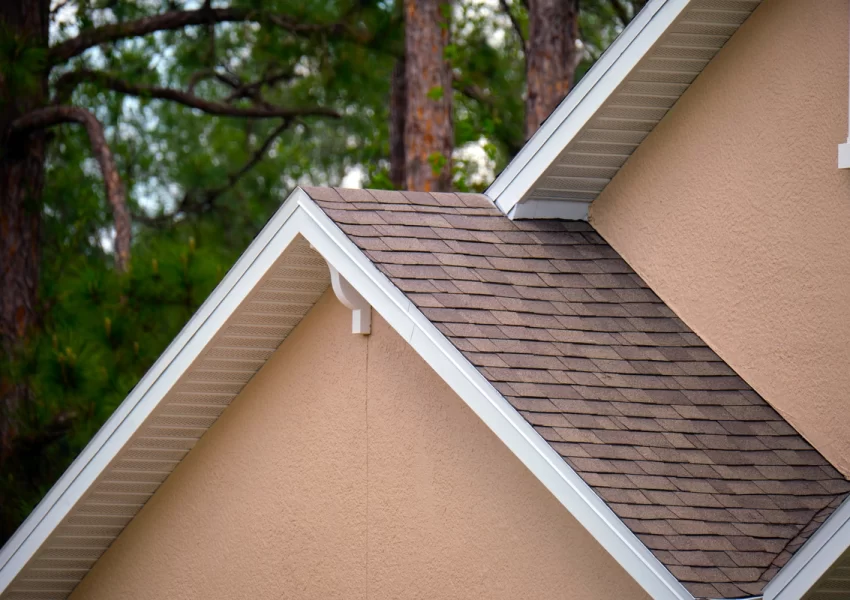Choice of roofing material is one of the most important decisions that you will make because it is essential to have a protective covering that adds value to your home and meets your aesthetic and budget needs. When it comes to these kinds of investments, we should consider how they will perform in the long term.
It should be cost-effective and its warranty should be as comprehensive as possible. Moreover, environmental impact, lifespan and maintenance should be all be taken into account.
Asphalt Shingles
When choosing shingle to roof your house, you may be worried about many different things. In making a decision on this important matter, you need to come to a balance of beauty, cost, your climate needs, and maintenance.
Affordability and versatility is why asphalt shingles are the most popular roofing material in the US. However, its affordable price and versatility does not make it immune to criticism, as it comes in different variants like a traditional 3-Tab, architectural laminated and dimensional style.
The first thing to consider when choosing roofing material is your local climate and weather. In areas where we get extreme bad storms its best to choose an impact-rated option to help save from those damaging impacts. Also another option if living in areas that receive alot of snow and rainfalls, rated for that weather condition as well. Last but not least try to find something that has a long lasting warranty as you can avoid the hassle of costly repairs and the installation costs in the future.
Metal
Your roof makes up one of the defining elements of the framework of one’s home, shielding against the weather, while enhancing its visual appeal and personal comfort level. Choosing an appropriate material for your roof takes into account elements such as durability in relation to the common allments, long-term price concerns, climatic relevance and the personifiable value over time.
Among the best choices are asphalt shingles and metal, mainly because of the extensive range of color and styles they provide and their ability to fit distinct architectural styles. For example, metal is a great material to install in places where hurricanes and heavy rainfall are common to assure greater weather resistance.
Eco-friendliness and durability have made slate roofs extremely popular with eco-friendly homebuilders. Building with slate is also eco-friendly – it will take much longer to heat your house than a number of other materials would, allowing you to reduce your energy costs, as well as insulate your home from hot and cold outside temperatures. On the downside, keeping your slate roof looking nice may cost you; there are more affordable alternatives to consider.
Tile
Regardless of your style, whether it’s cedar shakes or metal roofs, there is a roof material that will match your aesthetic preferences for timeless beauty and energy efficiency. Picking one will both guard against the elements and increase your home’s value and curb appeal.
The climate of your locality is a factor to be considered while choosing a roof covering material, not only in terms of whether it can resist extreme weather conditions but also in terms of fire resistance and ease of maintenance.
If it’s a hot, humid climate, roofs should be reflective, so that they don’t absorb the sun’s heat and raise internal temperatures; clay tiles or metal roofs with reflective coatings are ideal. Likewise, if it’s cold it’s best to use materials that will cope with snowfall on them. The harvested material must be wind- or hail-proof, or temporarily braced to protect against same; otherwise your home should be structurally altered as well. And, of course, your material must look good; it’s no use having a cheap roof if it detracts from the aesthetic appeal of your home.
Underlayment
The choice of roofing material can make an enormous difference in how long it lasts, how it looks, and how much a house or building is worth. Indeed, the material must withstand contraction and expansion, leaks and rotting; it must be fire- or cold-proof, suited to local weather and climate, and inexpensive over the long-term.
Picking the right roof is a bit like shopping for clothing: you wouldn’t wear your heavy winter coat in August, and neither should your roof.
For example, in a hot, dry climate, it is a good idea to choose roofing materials that repel (rather than absorb) sunlight, such as metal roofing or clay tiles. Or, if your home is in a region that experiences frequent, humid, stormy weather, choose water-repellant roofing materials that have long life expectancies and manufacturers’ warranties, such as coated metal roofing tiles and concrete tiles.


